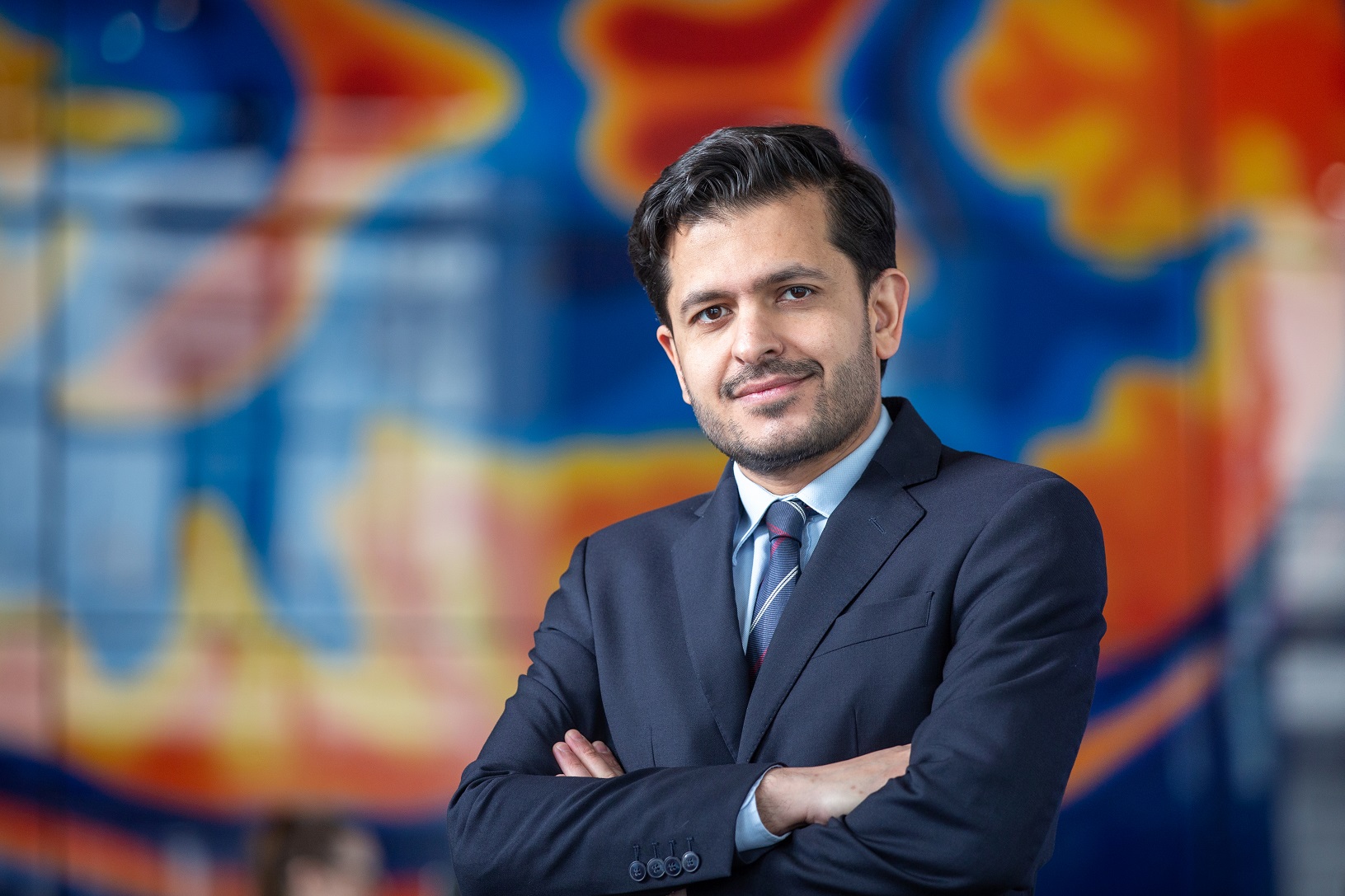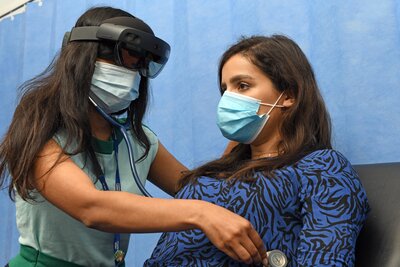Imperial Connection: The new reality of bedside teaching
IMPERIAL CONNECTION
The new reality of bedside teaching


By Professor Amir Sam, Head of Imperial College School of Medicine (ICSM), and Dr Risheka Walls, Digital Development Lead Phase 3 of ICSM
A concept first coined by Sir William Osler in the late 1800s, bedside teaching is ingrained in modern medical training. With packed lecture theatres and crowded ward rounds, this form of teaching is a very powerful tool in clinical training.
Yet at times the variability in tutor enthusiasm and availability of clinical signs can make it divisive, educating some students well and neglecting others. COVID-19 has facilitated a re-think in the way we deliver teaching, not just on a public health level but also in maximising parity of student training.
At Imperial College School of Medicine, we collaborated with Microsoft1 in an innovative world-first in undergraduate teaching to bring real patients and clinical consultations directly to students’ fingertips using the augmented reality headset HoloLens 22.

An Imperial medical student engages in a live clinical teaching session using the Microsoft HoloLens, interacting with the teaching clinician and patient information overlaid on the live image during a patient consultation
Augmented Reality is a form of technology that superimposes digital interfaces upon the physical world. Using pioneering HoloLens 2 devices, we enabled clinicians to deliver authentic high-quality undergraduate bedside teaching in an immersive manner, with maximal remote interaction between the patient, tutor, and medical students.
This technology brings students to the patients’ bedside virtually thereby recreating the teaching they would normally receive at the patient’s bedside in an engaging, dynamic, and innovative way.
We have thus far delivered sessions in Cardiology, Respiratory, and Orthopaedics. During sessions, the HoloLens headset is worn by a Consultant who is a specialist in their field.
The consultant can review the patient safely at their bedside and students interact with the live stream from the comfort of their desks. The students directly communicate with the patient and the consultant using the bi-directional microphone facility, creating an inclusive and immersive experience that mimics in-person bedside teaching. The students can also guide the consultant through their physical examination and observe and identify physical signs such as surgical scars, deformities, and neurological abnormalities.
Examination findings such as heart sounds and breath sounds are played as audio files to the students during the clinical examination recreating both the normal and pathological sounds normally heard through a stethoscope enabling students to diagnose even auditory clinical signs.

An Imperial clinician-educator wears the Microsoft HoloLens headset and carries out an examination on a patient, streaming the consultation live via Microsoft Teams to medical students who can interact and engage with the session from remote locations
To fully utilise the cutting-edge capabilities of the HoloLens we projected holograms into the surrounding space beside the patient, putting investigations such as radiographs, electrocardiograms, and 3D anatomy models in the context of a real patient.
Students viewed the holograms and were able to discuss their findings with the clinician as they would normally on the hospital ward, with the bonus of 3D anatomy models displayed in the “ward-space” enabling in-depth illustrative anatomy and physiology teaching at the patient’s bedside.
The feedback received from students has been extremely positive, with 100% of students finding it useful or very useful and 73% preferring it to online lectures and videos, thus demonstrating not only its immediate benefit during the pandemic, but critically its unique potential for the future of educating students going forward.

